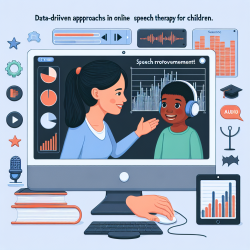Introduction
Chronic pediatric pain is a significant global health issue, particularly in low- and middle-income countries (LMICs) where access to adequate pain management is limited. The research article "Chronic Pediatric Pain in Low- and Middle-Income Countries" provides a comprehensive review of the challenges and potential solutions for managing pediatric pain in these regions. This blog post aims to highlight key findings from the research and suggest ways practitioners can enhance their skills and improve outcomes for children suffering from chronic pain.
Understanding the Burden of Chronic Pediatric Pain
Chronic pain in children is not just a physical ailment; it encompasses a complex interplay of biological, psychological, and socio-cultural factors. The prevalence of chronic pain in children globally is estimated to be between 20% and 35%. However, in LMICs, the burden is exacerbated by inadequate healthcare infrastructure, cultural barriers, and limited access to pain relief medications.
Children in these regions often suffer from untreated pain, which can lead to anxiety, depression, and a diminished quality of life. The research highlights the urgent need for increased awareness and advocacy to prioritize pediatric pain management as a fundamental human right.
Barriers to Effective Pain Management in LMICs
The research identifies several barriers to effective pain management in LMICs, including:
- Lack of trained healthcare professionals specializing in pain management.
- Cultural beliefs that may discourage the expression of pain or the use of pain medications.
- Regulatory restrictions on the availability and use of opioids and other essential pain relief medications.
- Limited resources and infrastructure to support comprehensive pain management programs.
Strategies for Improvement
To address these challenges, practitioners in LMICs can implement several strategies based on the research findings:
- Education and Training: Increase training opportunities for healthcare providers in pain management techniques, including both pharmacological and non-pharmacological approaches.
- Multidisciplinary Approach: Develop multidisciplinary teams that include psychologists, social workers, and physical therapists to provide holistic care for children with chronic pain.
- Community Engagement: Work with local communities to raise awareness about chronic pain and its impact, and to change cultural perceptions that hinder effective pain management.
- Advocacy for Policy Change: Advocate for policy changes that improve access to essential pain medications and support the development of pain management programs.
Conclusion
The research underscores the critical need for concerted efforts to improve chronic pediatric pain management in LMICs. By implementing the strategies outlined above, practitioners can enhance their skills and contribute to better outcomes for children suffering from chronic pain. Continued research and advocacy are essential to address the gaps in pain management and ensure that all children have access to the care they need.
To read the original research paper, please follow this link: Chronic Pediatric Pain in Low- and Middle-Income Countries.










